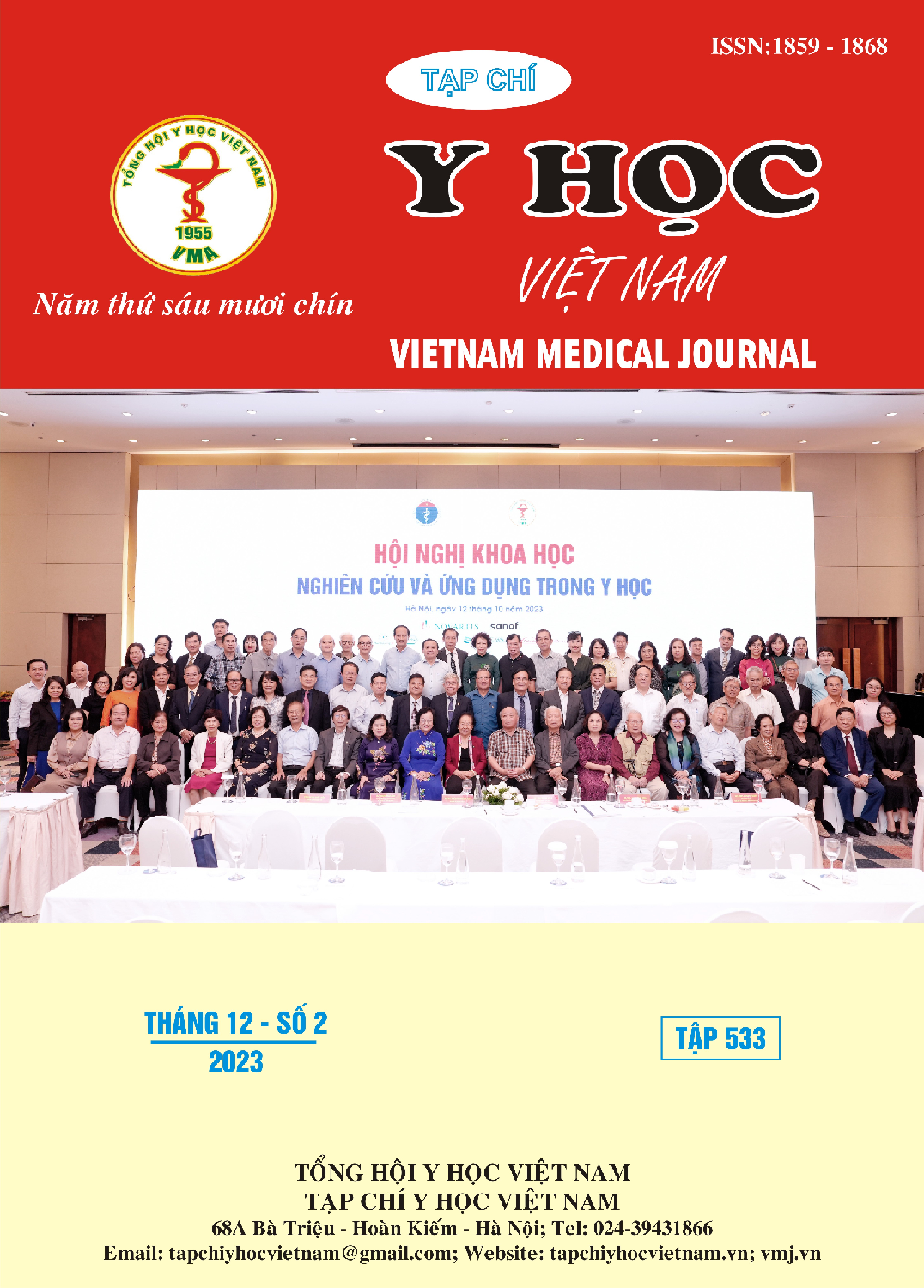CLINICAL AND PARACLINICAL CHARACTERIZATION OF MYASTHENIA GRAVIS PATIENTS AFTER THYMECTOMY
Main Article Content
Abstract
Objective: Describe the clinical and paraclinical characteristics of myasthenia gravis after thymectomy. Subjects and methods: A study was conducted on 66 patients with myasthenia gravis who underwent thymectomy at the Neurological Center, Department of Thoracic Surgery - Bach Mai Hospital from 10/2019 to 01/2023. Results: The mean age was 44.42±11.59 years old, under 50 years old (accounting for 71.2%); 65.2% were women. The mean time of disease onset was 3.28±2.84 years. The positive anti-AchR antibody test rate was 80.3%; 87.9% of repeat tests were positive. Most subjects had complete thymus resection (72.7%). Pathological results: 58.1% of the subjects had cancer; 41.9% were hyperplastic. The rate of clinical symptoms decreased after surgery, eyelid ptosis (reduced from 72.7% to 56.1%), difficulty speaking (53.0% to 22.7%), and difficulty swallowing (28.8% to 13.6%); the difference was statistically significant, p<0.05. There were no statistically significant differences before and after surgery in the symptoms of double vision, shortness of breath, and limb muscle weakness. The rate of acute myasthenic attacks before thymectomy was 43.9%, reduced to 37.9%; however, the difference was not statistically significant p>0.05. After surgery, the proportion of stage 1 patients increased from 7.6% to 41.4%; Patients with stage II or higher decreased to 57.6%. The difference in the clinical stage before and after surgery was statistically significant, p<0.05. Conclusion: Patients with myasthenia gravis after thymectomy have improved clinical symptoms.
Article Details
References
2. Phùng Anh Tuấn, Nghiên cứu đặc điểm hình ảnh và giá trị của cộng hưởng từ trong đánh giá tổn thương tuyến ức ở bệnh nhân nhược cơ. 2018: Đại học Y Hà Nội.
3. Beghi, E., et al., Prognosis of myasthenia gravis: a multicenter follow-up study of 844 patients. Journal of the neurological sciences, 1991. 106(2): p. 213-220.
4. Davenport, E. and R.A. Malthaner, The role of surgery in the management of thymoma: a systematic review. The Annals of thoracic surgery, 2008. 86(2): p. 673-684.
5. Mai Văn Viện, Đánh giá kết quả cắt tuyens ức điều trị bệnh nhược cơ. Tạp chí y học Việt Nam, 2010. 2: p. 140-6.
6. Nguyễn Thị Thu, Đặc điểm lâm sàng và các yếu tố tiên lượng tái phát gần các đợt cấp của bệnh nhược cơ. 2020: Đại học Y Hà Nội.
7. Thơ, P.K.A., L.Đ. Tùng, and N.T. Bình, Đặc điểm lâm sàng và test kích thích thần kinh lặp lại ở bệnh nhân nhược cơ. Tạp chí Nghiên cứu Y học, 2021. 137(1): p. 213-221.
8. Chiou-Tan, F.Y., et al., Literature review of the usefulness of repetitive nerve stimulation and single fiber EMG in the electrodiagnostic evaluation of patients with suspected myasthenia gravis or Lambert-Eaton myasthenic syndrome. Muscle Nerve, 2001. 24(9): p. 1239-1247.


